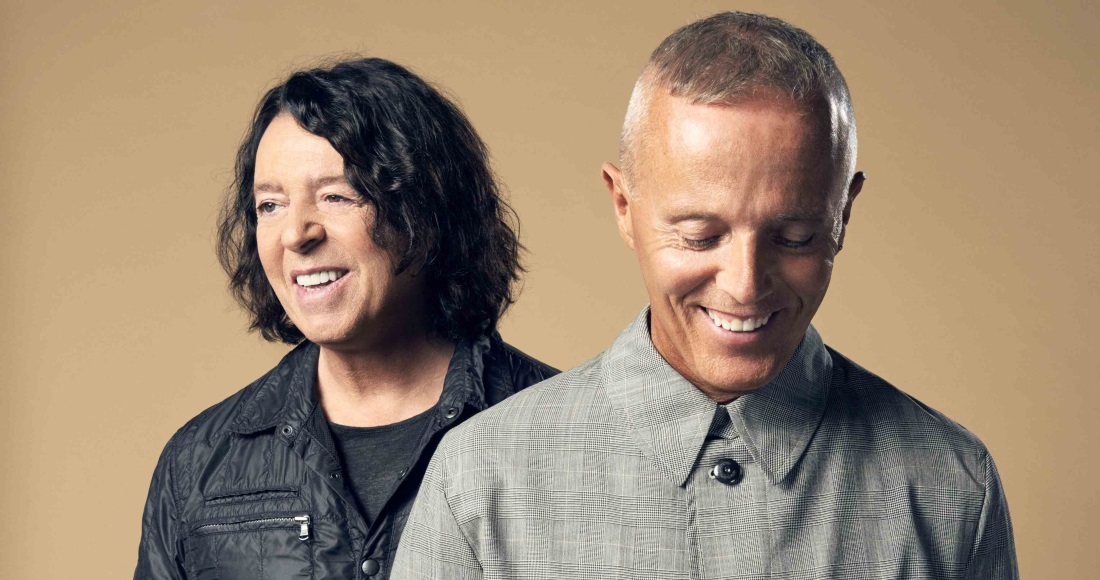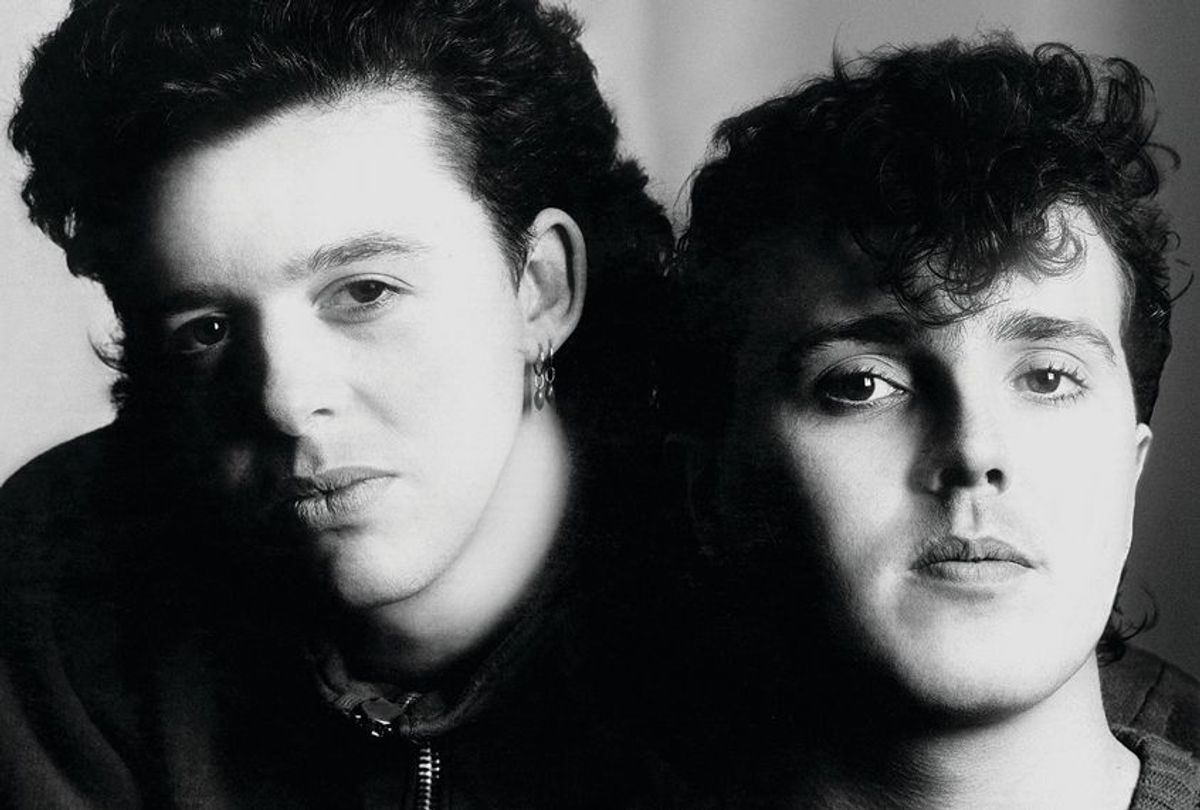Tears For Fears - A Musical Journey Through Time
For anyone who has ever felt a deep connection to music that speaks to the inner self, the sound of Tears for Fears likely holds a special spot. This English pop rock group, which came into being in Bath way back in 1981, has, in a way, crafted songs that truly stick with you, reaching across generations. You know, their tunes often explore thoughts and feelings that many of us share, making them feel very personal and yet, at the same time, quite universal.
Their music, you see, has this way of staying fresh, even after all these years. It's almost as if each listen brings out something new, something you might not have noticed before. From those early days when they first started getting noticed, right up to their more recent offerings, the group has consistently given us sounds that are both thought-provoking and, well, just plain good to listen to. They really do have a unique way of putting melodies and ideas together, which is pretty special, to be honest.
So, if you're curious about the people behind these memorable sounds, or perhaps want to remember some of their most well-known pieces, you've come to the right place. We'll take a look at their beginnings, how their sound grew, and what makes their musical creations continue to matter to so many people today. It's really quite a story, and we'll touch on some of the key moments that shaped their path.
Table of Contents
- The Story of Tears for Fears' Beginning
- How Did Tears for Fears First Come Together?
- The Sound That Defined an Era
- What Made Tears for Fears' Early Music Stand Out?
- A Time Apart - The Solo Path
- Why Did Tears for Fears' Members Pursue Individual Projects?
- Coming Back Together - Tears for Fears Reunited
- What is the Legacy of Tears for Fears' Music Today?
The Story of Tears for Fears' Beginning
The tale of Tears for Fears really begins in a place called Bath, a lovely spot in England, back in the year 1981. It was there that two creative minds, Roland Orzabal and Curt Smith, decided to join forces and see what kind of sounds they could make together. This coming together, you know, marked the start of something that would eventually touch a lot of listeners across the globe. They were, in essence, just two people with a shared vision for making music that felt different, that had a certain depth to it. Their early efforts were all about exploring new ways to express themselves through song, trying out various ideas and seeing what stuck. It's pretty cool, actually, how a simple decision between two friends can lead to such lasting work.
How Did Tears for Fears First Come Together?
Well, to put it simply, the story of how Tears for Fears first came together centers on Roland Orzabal and Curt Smith. These two individuals, both with a flair for creating tunes, decided to form their own musical group in Bath during 1981. They had, you might say, a shared sense of what they wanted their sound to be like, a kind of fresh take on pop and rock that had a bit more thought behind it. Their collaboration from the very start was, in some respects, quite strong, as they bounced ideas off each other and built a unique musical identity. It’s fascinating to think about those initial days, just two people in a room, perhaps with a guitar and a keyboard, shaping what would become the distinctive sound of Tears for Fears. Their partnership, right from the get-go, set the stage for everything that was to follow, laying down the groundwork for their memorable musical creations.
The Sound That Defined an Era
Once they had put their group together, Tears for Fears didn't take long to make a real impression. Their sound, quite honestly, felt like something new, something that really spoke to people at the time. It was a blend of catchy pop melodies with thoughtful, sometimes deep, lyrical content, which was a bit of a departure from what many others were doing. They had a knack for creating a certain mood with their songs, a feeling that stayed with you long after the music stopped playing. This unique approach helped them stand out in a crowded music scene, making their sound something truly their own. You could, in a way, always tell when a Tears for Fears song was playing, and that's a pretty good sign of a group that has found its true voice.
What Made Tears for Fears' Early Music Stand Out?
The early musical pieces by Tears for Fears truly began to get noticed in 1982, particularly with their single "Mad World." This particular tune, you know, climbed all the way to the number 3 spot in the United Kingdom, which is pretty good for a new group. What made their early work, including "Mad World," really stand out was, in part, the way they combined interesting sounds with words that made you think. It wasn't just simple pop; there was a layer of something deeper there, something that touched on feelings and thoughts that people could relate to. They managed to create a sound that felt both fresh and, at the same time, a little bit reflective, which caught the attention of many listeners. Their ability to craft songs that were both popular and meaningful was, quite honestly, a big reason why Tears for Fears started to gain so much recognition.
A Time Apart - The Solo Path
After their initial period of shared success, the path for Tears for Fears took a slightly different turn for a while. There came a point when the two main creators, Roland Orzabal and Curt Smith, went their separate ways, at least in terms of their musical output as a duo. During this period, Roland Orzabal put out some musical pieces that were, in effect, his own individual efforts, even though they carried the spirit of the group's sound. These included albums like "Elemental" in 1993 and "Raoul and the Kings of Spain" in 1995. These works, you could say, allowed Orzabal to explore his own musical ideas and directions, giving listeners a glimpse into his personal creative space. It was a time when the group, as a united front, was less active, but the music continued to flow, just from one of its core members. This period was, in some respects, a moment for individual expression within the broader story of Tears for Fears.
Why Did Tears for Fears' Members Pursue Individual Projects?
It seems that, for a time, the members of Tears for Fears, particularly Roland Orzabal, decided to work on their own musical ideas. The albums "Elemental" from 1993 and "Raoul and the Kings of Spain" from 1995 were, you might say, essentially solo creations by Orzabal. This kind of individual pursuit often happens in musical groups, where one person wants to explore a specific sound or set of ideas that might not fit perfectly with the group's usual style. It allows for a different kind of creative freedom, a chance to really focus on one's own vision without needing to compromise. So, while the group as a whole was not putting out new music together during these years, the individual creative spirit of Tears for Fears was still very much alive through Orzabal's efforts. It shows, actually, that even when a group takes a break, the desire to make music often continues for its individual members.
Coming Back Together - Tears for Fears Reunited
Happily for many who had followed their music, the two main people behind Tears for Fears did eventually come back together. The group, as a duo, got back together in the year 2000 to work on something new. This reunion was, to be honest, a welcome event for listeners who had missed their combined musical presence. When groups who have been apart decide to make music together again, it often brings a fresh energy, a renewed sense of purpose. It’s like picking up a conversation that was paused for a while, but with new experiences and ideas to share. This coming together allowed them to create more sounds, adding new chapters to their ongoing musical story. It truly was a moment that many had hoped for, marking a fresh start for Tears for Fears.
What is the Legacy of Tears for Fears' Music Today?
The impact of Tears for Fears' music continues to be felt, you know, even now. When you think about their most well-known songs, like "The Tipping Point" or "The Way You Are," these pieces really show the breadth of their creative work. These songs, and many others, have left a lasting impression on listeners, becoming tunes that people remember and cherish. Their musical output, in some respects, has a way of resonating with different people for different reasons, whether it's the words, the melody, or the overall feeling. To get a better sense of their ongoing story, you can look up Tears for Fears' music on places like Billboard, where you can find the latest information, details about their background, and other current happenings concerning the group. It's clear that their contributions to music are still very much a part of the conversation, showing how much their work means to so many.
Finding the Music of Tears for Fears
For anyone wanting to listen to the sounds of Tears for Fears, there are plenty of ways to do just that. You can find a complete listing of their songs, which musical collections they appear on, and where to get them on sites like Amazon and Apple Music. This makes it really easy to explore their entire collection, from their earliest pieces to their more recent ones. Whether you're looking to revisit an old favorite or discover something new from their work, these platforms offer a straightforward way to access their creations. It's pretty convenient, actually, that so much of their musical history is readily available for anyone to listen to whenever they feel like it. So, if you're ever in the mood for some classic tunes or want to hear what they've been up to lately, finding the best songs by Tears for Fears is just a few clicks away.
The Enduring Appeal of Tears for Fears
The fact that Tears for Fears continues to be a topic of interest, even in 2017 when they were still quite active, speaks volumes about their lasting appeal. Their musical creations have a way of staying relevant, perhaps because the feelings and ideas they explore are, in a way, timeless. People keep seeking out their songs, whether it's for comfort, reflection, or just pure enjoyment. This ongoing connection between the group's work and its listeners shows that good music truly has no expiration date. It's clear that the sounds they put out into the world have made a significant mark, and they continue to be a source of joy and contemplation for many. You might say, their songs have become a part of the musical fabric for a lot of us, and that's a pretty wonderful thing.

TEARS FOR FEARS songs and albums | full Official Chart history

Tears for Fears' 'Everybody Wants to Rule the World' Returns to No. 1

Tears for Fears' new greatest hits record is a hello — not a farewell